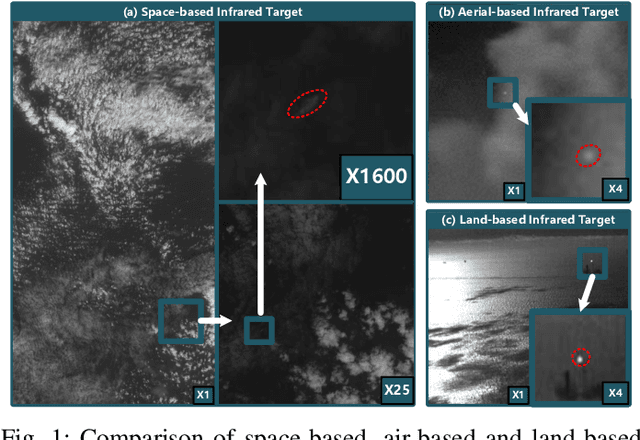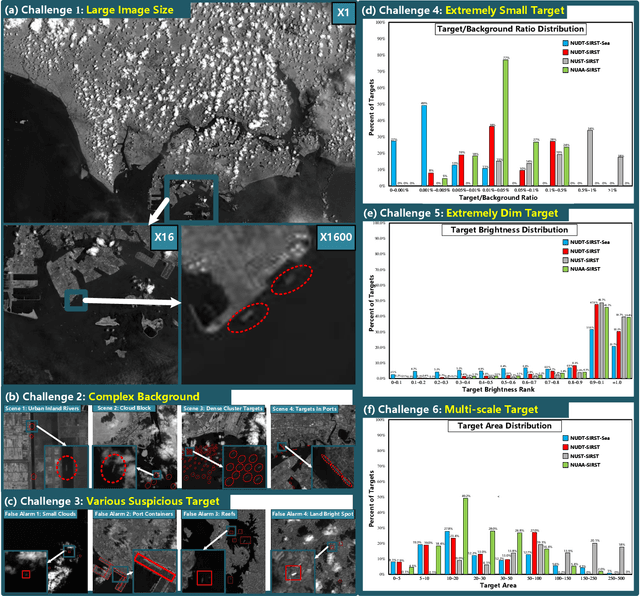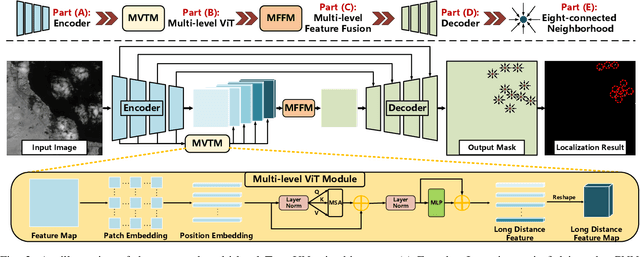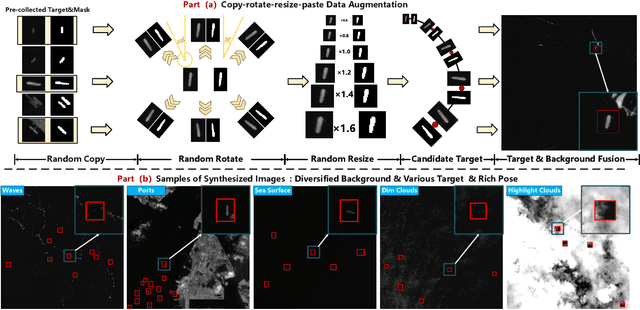MTU-Net: Multi-level TransUNet for Space-based Infrared Tiny Ship Detection
Paper and Code
Sep 28, 2022



Space-based infrared tiny ship detection aims at separating tiny ships from the images captured by earth orbiting satellites. Due to the extremely large image coverage area (e.g., thousands square kilometers), candidate targets in these images are much smaller, dimer, more changeable than those targets observed by aerial-based and land-based imaging devices. Existing short imaging distance-based infrared datasets and target detection methods cannot be well adopted to the space-based surveillance task. To address these problems, we develop a space-based infrared tiny ship detection dataset (namely, NUDT-SIRST-Sea) with 48 space-based infrared images and 17598 pixel-level tiny ship annotations. Each image covers about 10000 square kilometers of area with 10000X10000 pixels. Considering the extreme characteristics (e.g., small, dim, changeable) of those tiny ships in such challenging scenes, we propose a multi-level TransUNet (MTU-Net) in this paper. Specifically, we design a Vision Transformer (ViT) Convolutional Neural Network (CNN) hybrid encoder to extract multi-level features. Local feature maps are first extracted by several convolution layers and then fed into the multi-level feature extraction module (MVTM) to capture long-distance dependency. We further propose a copy-rotate-resize-paste (CRRP) data augmentation approach to accelerate the training phase, which effectively alleviates the issue of sample imbalance between targets and background. Besides, we design a FocalIoU loss to achieve both target localization and shape description. Experimental results on the NUDT-SIRST-Sea dataset show that our MTU-Net outperforms traditional and existing deep learning based SIRST methods in terms of probability of detection, false alarm rate and intersection over union.
 Add to Chrome
Add to Chrome Add to Firefox
Add to Firefox Add to Edge
Add to Edge